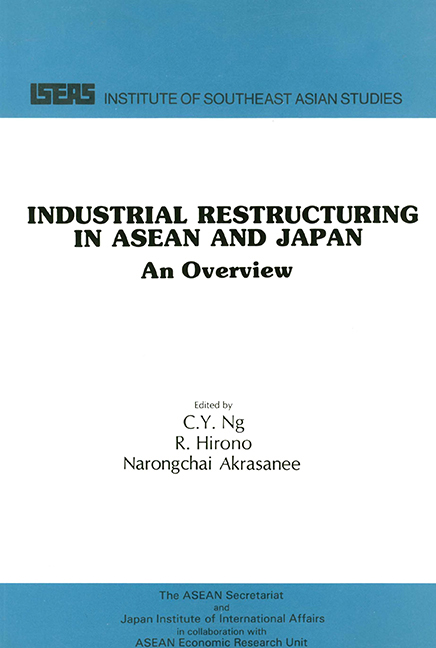1 - ASEAN ECONOMIES IN PERSPECTIVE
from PART ONE - ASEAN OVERVIEW
Published online by Cambridge University Press: 21 October 2015
Summary
The ASEAN economics are open and trade oriented, with the degree of trade dependence varying inversely with population size among member countries. Compared with other developing countries, each has a relatively large external sector and high exports to GNP ratio. The characteristic feature is the peculiar position of dependence on the West and Japan for trade, capital, technology, and even decision-making to generate domestic economic growth. This peculiar position of dependence reflects: 1. the inter-relatedness of investment (both foreign and domestic, imports and exports (most of these economies are dependent on machinery and equipment from the industrial countries which ultimately have to be accounted for by increased exports); and 2. the sensitivity of current output to the impact of external changes.
The Growth Performance of ASEAN in the 60s/70s
For nearly three decades up to the early 1970s, industrial countries experienced continuous and sustained growth. This extended period of economic growth was in part aided by trade liberalization measures which stimulated vigorous expansion of world trade. While the industrial countries concentrated on manufactured and capital goods, the developing countries as a whole were relegated to the export of primary products and were not able to share proportionately in this expansion of world trade. Nonetheless, the scope and vigour of this expansion promoted export growth in developing countries.
In the 1970s, dramatic changes in the world economic scene with important implications for trade and growth started to emerge. Beginning with the breakdown of the international monetary system established under the Bretton Woods Agreement, currency instability became the order of the day. This was followed by the two major oil shocks of 1973 and 1979 which changed the costs of production, production structure, and the balance of payments position of countries the world over. The world industrial market economies went through two recessions separated by a four-year period of modest growth. The first recession of 1974–75 though deeper than the second was quickly overcome in 1976 by a conventional combination of fiscal and monetary expansion. However, the results were not very satisfactory as inflation persisted at high levels.
- Type
- Chapter
- Information
- Industrial Restructuring in ASEAN and JapanAn Overview, pp. 3 - 10Publisher: ISEAS–Yusof Ishak InstitutePrint publication year: 1987



